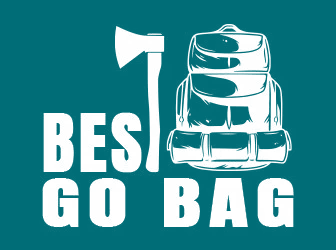<imgsrc=”” alt=””>
Hurricanes are, without a doubt, some of the most devastating and costly natural disasters known to man. Preparing your family and home before a hurricane strikes and knowing how to react after it has passed are fundamental to protecting your personal property and keeping you and your family members safe and sound.
So, what should one do if a hurricane is forecasted? Don’t panic and keep reading—here is our hurricane survival guide to get you through the storm.
What Is A Hurricane?
A hurricane is a dangerous type of tropical cyclone that can cause high winds, torrential rains, storm surges, and flooding for two weeks or more over open water. They can follow a path across the entire length of the eastern seaboard, its coastal areas, and barrier islands.
A hurricane is defined primarily by its wind speeds, which must be 74 mph or greater—anything less than that, and the cyclone is classified as a tropical storm.
Here are some important terms you should be familiar with:
- Tropical Storm Watch: A tropical storm watch is issued when tropical storm conditions are possible in the immediate area.
- Hurricane Watch: A hurricane watch is when hurricane conditions are possible in the immediate area. Hurricane watches are issued 48 hours in advance of the anticipated onset of tropical force winds.
- Tropical Storm Warning: A tropical storm warning occurs when tropical storm conditions are expected in the immediate area.
- Hurricane Warning: A hurricane warning is issued when hurricane conditions are expected in the immediate area. Warnings are issued 36 hours in advance of tropical-storm-force winds.
- Eye: The eye is clear and is sometimes the well-defined center of the storm with calmer weather conditions.
- Eye Wall: The eye wall surrounds the eye and contains some of the most severe weather conditions of the storm with the highest wind speed and largest precipitation.
- Rain Bands: Rain bands that come off the cyclone produce severe weather conditions such as heavy rain, wind, and even tornadoes.
- Storm Surge: A storm surge is often underestimated and a deadly result of ocean water swelling.
In the event of a hurricane watch, prepare your home and evacuation plan in case a warning is issued. During a hurricane warning, follow the directions of officials—immediately grab your emergency supply kit and leave the area if they advise it. In the event of an extreme wind warning- which means that extreme winds sustaining speeds of 115 mph or higher are expected—immediately take shelter in the interior portion of a well-built structure.
How To Prepare For A Hurricane
Don’t wait last minute until a watch is issued because it may be too late to take certain precautions. Reduce potential property damage and get through any hurricane emergency with less stress by preparing before the season begins.
Plan Your Evacuation Route Ahead of Time
If you happen to live on the coast, in a mobile home, or in a van, you may have to evacuate in the event of a major hurricane. While you will undoubtedly get instructions from the local government, it is wise to create your hurricane evacuation plan well before one of these natural disasters strikes. This way, you can know ahead of time about the shelters closest to you, take your furry friends into account in your plan, and make sure to gather and take important papers.
Keep Non-Perishable Emergency Supplies On Hand
When a hurricane warning is issued, hundreds of people often run to the stores making last-minute emergency supply purchases. Get ahead of the rush and keep these following items on hand:
- Extra batteries
- Candles or lamps with fuel
- Materials and tools for emergency home repairs— such as heavy plastic sheeting, plywood, a hammer, etc.
- Prescription drugs
- A two-week supply of drinking water
- First aid supplies or a first aid kit
- A wrench and other basic tools
- A flashlight
- Food that you don’t have to cook or refrigerate
- A multi-tool
- Matches
If you need to leave your home and evacuate, you will need to bring these supplies with you, so be sure to store them in an easy-to-carry bag. If you’d prefer, you can purchase a great pre-made emergency kit instead of making one. Just be sure to purchase from a great company like Stealth Angel Survival to ensure all of your supplies is top-quality.
Take An Inventory of Your Personal Property
Creating an inventory of your personal property will help ensure that you have purchased enough insurance to replace your personal possessions. It can also speed up the claims process, substantiate losses for income tax purposes, and is helpful should you need to apply for government disaster aid. In the event that you do need to evacuate, be sure your home inventory list is among the important documents you take with you.
Take Steps To Protect Your Home
Hurricane winds can turn landscaping materials into missiles that can break doors and windows. Much of the property damage associated with these powerful storms occurs after the windstorm when rain enters structures through broken doors, windows, and holes in the roof. While retrofitting your home to protect against these potential possibilities is undoubtedly an expense, you can do it in stages.
- Replace rock or gravel landscaping materials with shredded bark, which is lighter and won’t cause as much harm.
- Cut weak trees and branches that could potentially fall on your house and keep all shrubbery trimmed.
- Install strong storm shutters to protect your windows from breaking. Alternately, fit plywood panels to your windows, which can be nailed to the window frames when a storm approaches.
- Make sure exterior doors are hurricane-proof and have at least three hinges and a deadbolt lock that is at least one-inch long.
- Sliding glass doors should always be made of tempered glass, and during a storm, covered with plywood or shutters. Sliding glass doors are much more vulnerable to wind damage than most other doors.
- Seal outside wall openings such as vents, garden hose bibs, outdoor electrical outlets, and locations where pipes or cables go through the wall. Use a high-quality urethane-based caulk to prevent water from seeping in.
- If you have a trailer or boat, know how to properly anchor them to the ground or house.
What To Do During A Hurricane
First, evacuate if you’re directed to do so or if you feel it might be unsafe to stay in your home. However, if you do stay in your home, follow these tips to help you and your loved ones stay safe during the hurricane:
- Use a portable crank radio to listen to important storm updates, information, and instructions.
- Stay indoors and keep away from all windows, glass doors, and skylights. Grab your emergency supply kit and head to a safe area, such as an interior room, closet, or downstairs bathroom.
- If your power is lost, keep the refrigerator closed to keep the cold air trapped and delay spoilage of perishable food.
- Never leave or go outside the protection of your home before there is confirmation that the hurricane has passed the area. The eye of the hurricane could create a temporary and deceptive lull, with strong winds and rain still approaching.
A Final Word
Recovering from a disaster like a hurricane is a gradual process. Safety is a primary issue, as are physical and mental well-being.
These dangerous storms can do quite a bit of damage so being prepared is of the utmost importance. Be sure to have an emergency plan in place and supplies readily available.
When looking to stockpile emergency supplies to prepare for a hurricane, be sure to check out Stealth Angel Survival— the leader in emergency preparedness kits, supplies, and survival products. Whether you are looking to purchase a great pre-made bug-out bag or put together survival tools, Stealth Angel Survival can help.
Sources:



